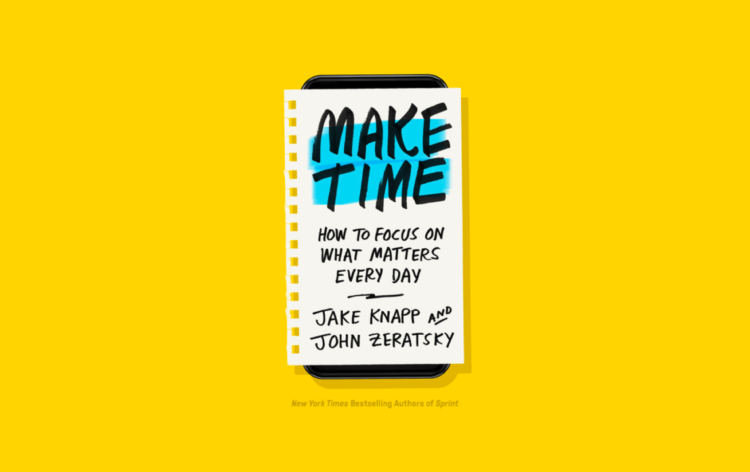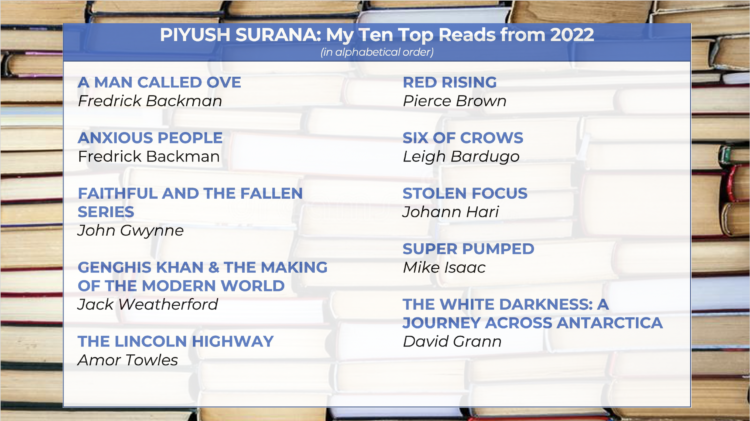New year. The time of the year to not only reflect but also to set yourself up for success in the coming year. I hope that over the holiday period, you found the time to spend not only with your family but also on yourself.
I’ve had a consistent ritual over the last decade to spend the last week of the year reflecting on what I have done and learned in the year gone by and some things that I would like to focus on in the new year.
If, like me, health is one of those areas you would like to focus on in the new year, I unreservedly recommend the book Outlive by Dr Peter Attia. You would likely have already heard of the global bestseller and its premise: how to increase not only your lifespan (how long you live) but, more importantly, your healthspan (how well you live and the quality of your years). Something we could all work upon.
For those who have not read the book (and for some like me who have), I have made a note of key takeaways that I am planning to deploy in 2024. Sharing it here in the hope that others find it useful.
The four chronic diseases of aging – and the importance of regular medical checkups
If you’re not unlucky (i.e. don’t die in an accident at a young age), the odds are that you will die of one of the four chronic diseases of ageing:
- Heart disease
- Cancer
- Neurodegenerative disease
- Type 2 diabetes and related metabolic dysfunction
While we have made much progress against communicable diseases over the last half-century, our progress in treating these chronic diseases has been relatively slow. This is because modern medicine focuses on treating a disease after it occurs – but in the case of most of these chronic diseases, that may already be too late.
There are two main takeaways from these:
- Get as comprehensive health check-ups as you can as regularly as you can and from as early and age as possible.
- Focus on prevention rather than cure – which I will describe in detail below.
Preventing chronic disease
Thankfully, the three vectors of deterioration brought on by ageing – cognitive, physical and emotional decline – can all be combatted with the same five broad domains of tactics (presented here in their order of importance).
- Exercise
- Diet or nutritional biochemistry
- Sleep
- Improving emotional health
- Exogenous molecules (drugs, hormones or supplements)
I am focusing on the first three areas for two clear reasons. Firstly, I don’t feel qualified to speak on emotional health and drugs. Secondly, I did not find a lot of clear actionables that I could implement from the book in these areas. Unlike the rest of the book, which is based on solid scientific principles and research, the section on emotional health is based largely on Dr Attia’s personal experience, and others may not face those same issues. And he has completely omitted writing anything on exogenous molecules in the book. While he is vague about the reasons, I suspect it may also be partly down to regulatory issues in suggesting and prescribing medication, some of which may be experimental and not medically established yet.
Exercise
Exercise is the most potent longevity drug, and nothing else has more of a role in how you will live the rest of your life. The benefits of exercising are so immense that it should really be recognised as a drug on its own.
Exercise improves our heart muscles and our mitochondrial health (which is critical for a good metabolism that helps you burn fat), strengthens our immune systems and stimulates the growth of new muscles and stronger bones – critical as you grow older. Exercise is critical not only for our body but also for our mind, playing a key role in keeping our brain healthy.
When you exercise, you are really targeting four different parameters which you want to include in your workout regimen:
Zone 2 Workouts
These are long, steady endurance workouts that help build endurance for all activities in life. Done well, zone 2 training improves our ability to use fat as a fuel by improving the health of our mitochondria. It means going slow enough to talk but fast enough that the conversation may be a little strained. It corresponds to being in ~70-85% of max heart rate and is easily trackable by a host of fitness wearables (such as my Apple Watch). Three hours per week of zone 2 is the minimum required for most people to derive benefits and make improvements.
VO2 Max Training
VO2 max training is a much higher level of intensity compared to zone two training but still well short of an all-out sprint. VO2 max is a measure of peak aerobic capacity that is powerfully correlated with longevity. Boosting VO2 max by 25% is equivalent to subtracting 12 years from your age. Best of all, it is an objective number that can be measured by treadmill tests at medical facilities or even some fitness trackers like Apple Watch or Garmin (though a touch less accurately). The way to train VO2 max is by supplementing zone 2 workouts with 1-2 VO2 max workouts per week. The formula is to go for four minutes at the maximum pace you can sustain for this amount of time – and then go easy for four minutes, which should be enough time for your heart rate to come back down below 100 beats per minute. Repeat this 4-6 times and then cool down.
Strength training
Strength train with a focus on not just building strength and muscle mass but also avoiding injury in the process. Our muscles decline as we age, starting from as early as 30 years, and it takes much less time to lose muscle mass and strength than to gain it. Try to get in 2-3 sessions of strength training sessions a week with a focus on grip strength, attention to both concentric and eccentric movement (we need to lift the weight and put it down slowly and with control), pulling motions from all angles (from overhead to front of you) and hip-hinging movements (bending at the hip and not the spin). While you may not want to rely on a trainer for all your workouts, if you are new to strength training, investing in a trainer to help you get started is one of the best investments you can make in the new year.
Stability training
Stability is the solid foundation that enables us to do what we do without getting injured. Injuries are the main reason people stop moving in their later years. Hence, the first commandment of fitness is: Firstly, do thyself no harm. Stability is the key ingredient in avoiding harm, but it requires a change in mindset, from pushing yourself hard to cultivating the right movement patterns that minimise the risk of injury. One way to build stability is to follow DNS (dynamic neuromuscular stabilisation), which is based on the most natural movement we make – how we moved when we were babies. As we grow, years of bad habits like sitting all day in chairs deprive our bodies of this. You can explore more about DNS at www.rehabps.com or www.posturalrestoration.com.
Making a weekly exercise schedule that incorporates 3-4 sessions of zone 2 cardio (30-45 minutes each), 1-2 sessions of VO2 max cardio (35-50 minutes) and 2-3 sessions of weight and stability training (with a focus on form rather than weight lifted) will help you get to your fitness goals in the new year.
Diet or nutritional biochemistry
Diet is a touchy subject, with people holding strong views they would go to war over. For most people (like myself), the goal when it comes to nutrition is to reduce energy intake while increasing lean mass. This means reducing calorific intake while increasing protein consumption. But while the destination is clear, the path there is less straightforward. Eventually, all diets rely on one of three strategies:
- Caloric restriction or CR: eating less in total but without any attention to what is being eaten or when it’s being eaten.
- Dietary restriction or DR: eating less of some particular elements within the diet (meat, sugar, fats, carbs, etc.).
- Time restriction or TR: restricting eating to specific times, up to and including multiday fasting.
All of these have their own strengths and weaknesses. For example, DR only works if you pick a food type that is a substantial part of your diet so that it will enable a calorific deficit. I have personally had great results with keto (which is an extreme form of carb restriction) in the past. However, from an efficacy point of view, CR is the clear winner, but it doesn’t work unless you are really accurate and tracking everything you eat (I highly recommend myfitnesspal) without succumbing to cheats or snacks.
Overall, it is essential to ensure that no matter which diet you follow, you don’t end up restricting your protein consumption (a minimum of 1.6 g per kg of body weight per day, but for active people with normal kidney function, ideally 2.2 g/kg/). In fact, if you are metabolically healthy and not over-nourished, then you may not even need a diet at all. All you need to do is avoid eating junk.
My biggest takeaway from this section was to stop overthinking nutrition. Unlike what people will tell you, nutrition is not “60% of weight loss” or another such arbitrary number. Nutrition is more of a rescue tactic for people with poor metabolic health. In the end, the best nutrition plan is the one we can sustain. Instead of overthinking it, focus on exercising and being more active.
Sleep
As I’ve learned from my own experience in the past year, while sleep in itself may not be the prime mover when it comes to health, it is what you may consider table stakes. It’s hard to exercise well (and, more importantly, recover) or maintain a proper diet if you sleep poorly. Evolutionarily, sleep is non-negotiable. The fact that we spend up to a third of our lives doing it even after millions of years of evolution makes this quite clear – evolution would have weeded out any inefficient activity aeons earlier.
Research suggests we need to sleep about 7.5-8.5 hours a night. Getting significantly less (or more) sleep than this will cause issues in the long run. The problem is that (and I have been guilty of this in the past) people who are sleep-deprived become used to the state and underestimate the effect lack of sleep is having on them.
Poor sleep wrecks our metabolism (by increasing insulin dependence and increased levels of ghrelin or the “hunger hormone”) and increases the risk of cardiac events due to increased stress, blood pressure and glucose. To understand sleep and its function better, we need to understand the stages of sleep:
- During the night, we cycle between three sleep stages – light sleep, followed by deep sleep or NREM, and finally, rapid eye movement (REM) sleep, where all dreaming occurs. Each cycle lasts around 90 minutes, and we can have up to 5-6 such cycles in a good night’s sleep.
- REM sleep helps the brain grow and develop – which is why it is so vital when we are young. But even later in life, it remains important for creativity and problem-solving, allowing our brain to make new connections and expand our neural network. It also helps process our emotional memories, helping separate the emotions from the experiences that triggered them, decreasing anxiety and stress and helping us maintain our emotional equilibrium. This is why things always seem better after a good night’s sleep.
- Deep sleep is important to the health of the brain as an organ. In deep sleep, neurons pull back, allowing cerebrospinal fluids to sweep away detritus, including proteins linked to neurodegeneration, not allowing them to build up.
Hence, good quality sleep is essential for our long-term brain health. Unfortunately, our ability to sleep declines with age and the typical sleep medicines do NOT promote healthy sleep. Instead, you get some form of sleep-like unconsciousness incapable of generating either REM or NREM sleep and hence does nothing to promote brain health. Here are a few things that almost all of us can do to increase our ability to fall asleep.
- Understand your sleep pattern and track it with a sleep tracker. Where most of us fail is not giving ourselves enough time in bed to get the optimal amount of sleep. Once you understand your circadian rhythm, fix your wake-up time, and don’t deviate from it. If you need flexibility, change the time you go to bed.
- Make sure you are not suffering from any medical condition (such as sleep apnea) that hinders your ability to get good sleep.
- Increase your sleep pressure – our need or desire to sleep – by avoiding naps and exercising well (but not within 2-3 hours of bedtime).
- Create the right environment to sleep – some simple tips:
- Make your room as dark as possible. You don’t need night lights and, ideally, remove digital clocks also. Not only do they create light, but they also create anxiety when you watch them at night.
- LED lighting around homes tricks our minds into thinking it is still day. A couple of hours before going to bed, start turning off all the lights in your house. Swap out lights from blue-spectrum to warmer shades (switch to incandescent lights instead of LEDs where possible).
- In the same vein, stop looking at devices an hour before sleeping and don’t bring your phone or laptop to bed with you. This also helps you avoid anything that might create stress or anxiety, such as checking work emails or news.
- Temperature is also critical – one signal that we are falling asleep is that our body temperature drops by 1 degree Celsius. Keeping the room at around 18 C/65 F seems to be the optimal temperature to fall asleep. A warm bath before bed can also help bring down your core temperature and help you go to sleep faster.
- What we eat and drink also plays a large part in how we sleep:
- Alcohol may help you get to sleep faster, but as the night wears on, it is metabolised into chemicals that impair our ability to sleep deeply.
- Coffee does not fix poor sleep. It blocks adenosine, which signals to our brain that it is time to rest. Given that the half-life of caffeine is 6 hours (though everyone has a different caffeine tolerance), try to get your last cup of coffee closer to noon rather than in the evening.
- Don’t eat anything less than 3 hours before sleep – and ideally longer.
- Some supplements, such as ashwagandha and melatonin, have given good results in helping people fall asleep.
Conclusion
In many ways, the book was a great gift for myself for the holiday season. Ever since I shifted from Mumbai to Dubai six months back, my health activities (including sleep) have taken a back seat with the stress of moving to a new country and a new role and taking up a much broader role than I have attempted in the past. While change is indeed constant, I am hoping that in the coming year, I can apply a lot of what I learned from the book to daily life.
So here are some of my resolutions for the coming year, starting with immediately after my holiday travels:
- Targeting at least 6 hours of sleep a night (which means planning for >7 hours in bed).
- Following a workout routine that includes 3-4 Zone 2 cardio sessions, 2 VO2 max sessions and four strength sessions weekly.
- Mapping what I eat much more closely, trying to target less than 1800 kcals a day while ensuring I still get in >150 gms of protein daily. In smaller trials this month, I have realised intermittent fasting with an eating window from noon to 6 pm is my best bet to stick to this.
I hope you find these takeaways useful. I am super excited for what the new year will bring and wish you and yours a 2024 full of health and happiness!




